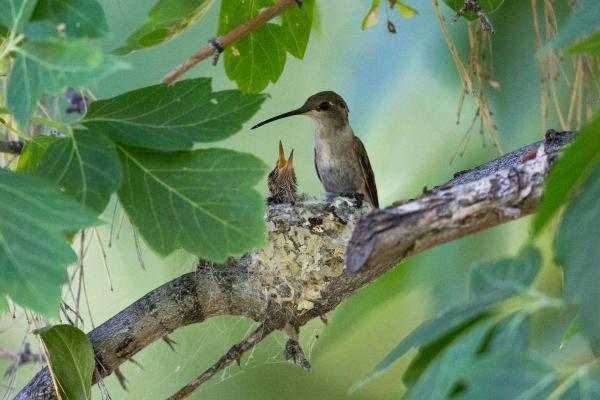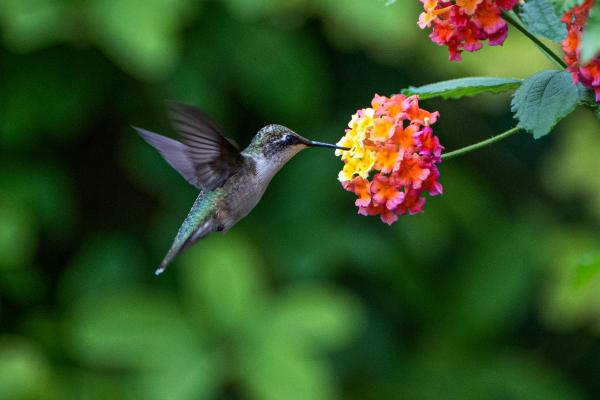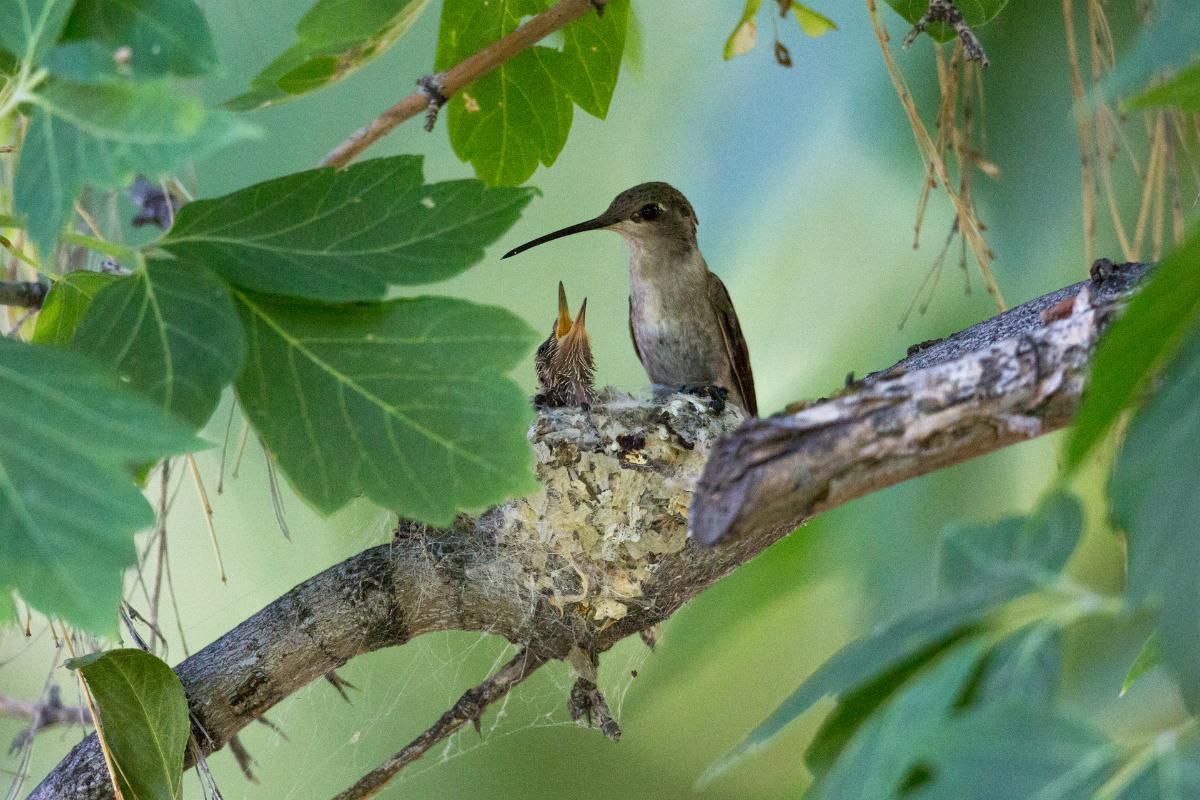Where Are Hummingbirds Most Common?


Hummingbirds are well known for their colors, incredible rapid wingbeats, and agility in flight. Despite their tiny size, these birds play a crucial role in pollination and are a delight to birdwatchers around the world. But where exactly are these birds most common, and what kind of habitats do they thrive in?
In this AnimalWised article, we’ll explore where humming birds are most common and uncover their incredible migration patterns.
Where do most hummingbirds live?
Hummingbirds are birds native exclusively to the Americas, with a distribution that stretches from Alaska and Canada in the north to Tierra del Fuego in Chile and Argentina in the south. They have evolved to thrive in the very diverse American ecosystems, often forming co-evolutionary relationships with nectar-producing plants, which are their primary food source.
The majority of hummingbird species are concentrated in the tropical and subtropical regions of America. In fact, countries such as Colombia, Ecuador, and Venezuela boast exceptional diversity in hummingbird species. However, the range of hummingbirds also extends into North America, with species found in the United States, Mexico, and even as far north as Canada.
It is important to note that many hummingbird species are migratory, undertaking impressive long-distance journeys between their breeding grounds in North America and their wintering homes in Central and South America. Some species, like the Ruby-throated Hummingbird (Archilochus colubris), can fly over 800 kilometers (500 miles) non-stop across the Gulf of Mexico. These tiny birds burn an enormous amount of energy during migration, often consuming nectar and small insects at a rapid pace.
Did you know hummingbirds can flap their wings up to 80 times per second? Learn the fascinating mechanics behind this extraordinary feat in this other article.

What is the best habitat for a hummingbird?
Due to their vast distribution across North, Central, and South America, hummingbirds occupy a wide range of habitats, including:
- Humid forests
- Arid zones
- High-elevation regions
Despite the diversity of habitats they inhabit, a common thread among all hummingbirds is their reliance on nectar to fuel their high metabolism. This makes the availability of nectar a crucial factor in determining where they reside.
In desert regions where nectar sources are scarce, hummingbird species have adapted to survive. They feed on cactus flowers, supplement their diet with small insects, or migrate to areas with more abundant food.
Conversely, tropical areas like rainforests and cloud forests are veritable paradises for hummingbirds. The abundance of nectar-rich flowers provides a constant food supply, while the dense vegetation offers shelter from predators.
Some species inhabit cold, high-altitude regions. These hummingbirds have evolved unique physiological traits to cope with low temperatures and reduced oxygen levels. Despite the challenging conditions, these open areas are often filled with wildflowers that attract them.
Interestingly, hummingbirds have also adapted to urban environments. It's not uncommon to see these tiny birds in backyards across North America, especially if there are nectar-producing flowers and hummingbird feeders.
Hummingbirds do a lot for plants, but they’re not alone! Find out which other animals play a crucial role in pollination around the world.

Where do humming birds migrate?
Hummingbirds migrate across a broad range of locations in the Americas, with most species following a seasonal migration pattern between North, Central, and South America. Their migration is primarily driven by changes in food availability, particularly nectar, as well as seasonal temperatures.
Most species from North America migrate south to Central America or Mexico for the winter. One of the most remarkable migratory feats is the Ruby-throated Hummingbird’s (Archilochus) non-stop flight across the Gulf of Mexico. These birds fly over 800 kilometers (500 miles) without stopping, a journey that can take up to 20 hours
Some hummingbird species, like those living in the Andes or tropical rainforests, do not migrate long distances but may shift elevations seasonally, moving between lowlands and higher mountain regions to follow blooming flowers.
Hummingbirds are just one of the many migratory birds passing through Mexico. Uncover the wide range of species that travel through this region in this other article.
Best place to see variety of hummingbirds in US
The American Southwest is often considered one of the best places to see a variety of hummingbirds in the United States. States like Arizona, New Mexico, and Texas are known for their diverse birdlife and abundance of nectar-producing plants, which attract hummingbirds.
- Big Bend National Park, Texas
- Chiricahua National Monument, Arizona
- Organ Pipe Cactus National Monument, Arizona
- White Sands National Park, New Mexico
- Davis Mountains State Park, Texas
Other regions in the United States that are also known for their hummingbird populations include the coastal regions of California, especially the Channel Islands, are home to several endemic hummingbird species. However, you can also visit the Los Angeles County Arboretum and Botanic Garden, a popular destination for birdwatchers, with a variety of hummingbird feeders and nectar-producing plants.
The subtropical climate of Florida supports a variety of hummingbird species, including the Ruby-throated Hummingbird and the Cuban Emerald. Be sure to visit the Everglades National Park, whis is home to a variety of bird species, including the Ruby-throated Hummingbird (Archilochus colubris) and the Cuban Emerald (Chlorostilbon ricordii).
Keep in mind that the best time to see hummingbirds in the United States is during the spring and summer months, when they are migrating through or breeding in the region.
How to attract hummingbirds to your yard
Even if you can't travel to distant birdwatching hotspots, you can still experience the beauty of hummingbirds right in your own backyard. By creating a welcoming environment, you can attract these fascinating creatures to your space.
One of the most important things to provide is nectar. Fill feeders with a sugar water solution (1 part sugar to 4 parts water), ensuring to change it regularly to prevent spoilage. Alternatively, plant nectar-producing flowers like trumpet vine, cardinal flower, and petunia. Offer a variety of plants to attract different hummingbird species. Place feeders and plants in sunny locations, away from windows and potential predators.
Another key element is providing shelter. Trees and shrubs offer excellent perching and nesting spots. Consider adding a hummingbird house for additional options.
Finally, create a water source. A shallow birdbath with clean water can attract hummingbirds for drinking and bathing. To entice them further, consider adding a small fountain or dripper, as hummingbirds are drawn to the sound of dripping water.
To ensure a safe space for hummingbirds, avoid using pesticides. Instead, opt for natural pest control methods to protect both the birds and their food sources.
Want to know more about the cultural significance of these tiny birds? Explore the Mayan story that celebrates the hummingbird's beauty and purpose.
If you want to read similar articles to Where Are Hummingbirds Most Common?, we recommend you visit our Facts about the animal kingdom category.
- Myers, P., R. Espinosa, CS Parr, T. Jones, GS Hammond, and TA Dewey. (2024). The Animal Diversity Web . Available at: https://animaldiversity.org.
- IUCN. (2024). The IUCN Red List of Threatened Species . Version 2024-1. Available at: https://www.iucnredlist.org







